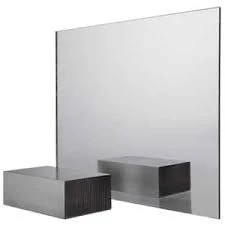

Understanding Low Emittance Glass A Key to Energy Efficiency
Low emittance glass, or low-E glass, is an innovative building material designed to enhance energy efficiency in residential and commercial structures. Through its unique properties, low-E glass plays a pivotal role in minimizing energy consumption, maximizing natural light, and improving indoor comfort.
Understanding Low Emittance Glass A Key to Energy Efficiency
The advantages of low-E glass are manifold. Firstly, it contributes significantly to energy savings. Buildings equipped with low-E windows can reduce heating and cooling costs by up to 30%, which not only benefits homeowners from a financial perspective but also has a positive environmental impact by decreasing carbon emissions. Moreover, as the demand for energy-efficient buildings grows, the installation of low-E glass can enhance property values and appeal to environmentally conscious buyers.

Additionally, low-E glass protects interior furnishings from fading and deterioration. Ultraviolet (UV) rays from the sun can cause significant damage to carpets, artwork, and upholstery over time. Low-E coatings effectively block up to 99% of UV radiation, preserving the beauty and longevity of interiors. This feature is particularly crucial for homeowners who wish to maintain their property’s aesthetic value.
The versatility of low-E glass extends beyond residential applications. In commercial settings, it contributes to sustainable building certification programs, such as LEED (Leadership in Energy and Environmental Design). Architects and builders increasingly incorporate low-E glass into their designs to achieve energy-efficient structures that meet modern environmental standards.
In conclusion, low emittance glass represents a significant advancement in building technology. Its ability to enhance energy efficiency, reduce costs, and protect interiors makes it an essential component for sustainable buildings. As awareness of environmental issues continues to rise, the demand for low-E glass is expected to grow, further solidifying its role in the future of construction and design. The integration of low-E glass not only fosters energy conservation but also promotes a healthier and more comfortable living environment, benefitting both individuals and the planet.